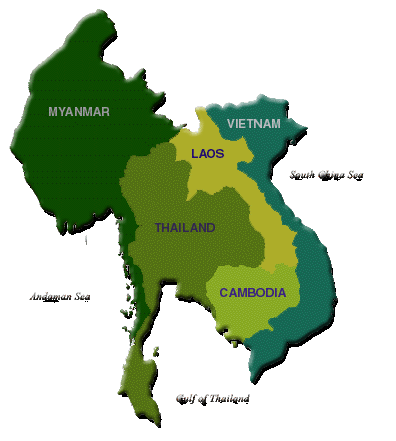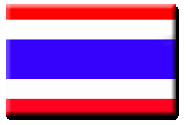Thailand's General Profile
Thailand's General Profile
วันที่นำเข้าข้อมูล 18 มิ.ย. 2555
วันที่ปรับปรุงข้อมูล 29 พ.ย. 2565
General Profile

Geography : The Kingdom of Thailand, covering an area of 514,000 square kilometres, lies in the heart of Southeast Asia, roughly equidistant between India and China. It shares borders with Myanmar to the west and north, Lao P.D.R. to the north and northeast, Cambodia to the east and Malaysia to the south.
Topography : Thailand is divided into four distinct areas : the mountainous North, the fertile Central Plains, the semi-arid plateau of the Northeast, and the peninsula South, distinguished by its many beautiful tropical beaches and offshore islands.
Climate : Thailand lies within the humid tropics and remains hot throughout the year. Average temperatures are about 29oC, ranging in Bangkok from 35oC in April to 17oC in December. There are three seasons: the cool season (November to February), the hot season (April to May), and the rainy season (June to October), though downpours rarely last more than a couple of hours.
Population : Thailand has a population of about 60 million. Ethnic Thais form the majority, though the area has historically been a migratory crossroads, and thus strains of Mon, Khmer, Burmese, Lao, Malay, Indian and most strongly, Chinese stock produce a degree of ethnic diversity. Integration is such, however, that culturally and socially there is enormous unity.

National Flag: Thailand's national flag, ceremoniously raised each morning in every town and village, is composed of five horizontal bands of red,white, and blue. The harmony of design expresses the complimentary nature of these three pillars of the Thai nation. This tri-colored flag, called in Thai the "trirong", first introduced by King Vajiravudh (Rama VI) in 1917, succeeded an earlier design that placed a white elephant (emblem of the absolute monarch) on a red background.Red represents nation.White evokes religion.
Blue symbolizes the monarchy
Capital: Bangkok
Major Cities: North : Chiangmai, South: Songkla, Central region : Ayutthaya and Chonburi, North Eastern : Nakhon Ratchasima and Khon Kaen
Historical Background
There are conflicting opinions as to the origins of the Thais. Three decades ago it could be said with presumed certainty that the Thais originated in Northwestern Szechuan in China about 4,500 years ago and later migrated down to their present homeland. However, this theory has been altered by the discovery of remarkable prehistoric artifacts in the village of Ban Chiang in the Nong Han District of Udon Thani Province in the Northeast. These include evidence of bronze metallurgy going back 3,500 years, as well as other indications of a far more sophisticated culture than any previously suspected by archaeologists. It now appears that the a Thais might have originated here in Thailand and later scattered to various parts of Asia, including some parts of China.
Siam is the name by which the country was known to the world until 1939 and again between 1945 and 1949. On May 11, 1949, an official proclamation changed the name of the country to "Prathet Thai", or "Thailand", by which it has since been known. The word "Thai" means "free", and therefore "Thailand" means "Land of the Free."
Useful Information
Business Hours: Government and business offices are open from 8:30 to 16:30 hours, Monday to Friday.
Electricity: 220 volts 50 cycles throughout the country
Currency: The Baht is the standard currency unit.
1 Baht = 100 satangs (1 USdollar is apporximately 40 Baht, however largely, depend of the exchange rate of that day)
Newspaper & Media:
There are over 100 radio stations in Bangkok. All are state-owned but private companies are given air time concessions for their programmes. Broadcasting is done in both Thai and English, with news broadcasting every hour. There are over 20 Thai morning dailies in Bangkok. Some of the leading Thai papers include Thai Rath, Daily News, Siam Rath, Matichon, Naew Na, Siam Post, Ban Muang, Krung Thep Turakij, Wattachak and the Manager. Two major English-language dailies are the Bangkok Post and The Nation. There are numerous English-language magazines and local publications in Japanese, Chinese and other European languages. Many major international newspapers, magazines and books are also widely available.
Five television stations, Channels 3, 5, 7, 9 and 11 broadcast local variety shows, newscasts and live coverage of special events. Cable TV is also available by subscription.
Thailand's freedom of the press is considered the strongest in Southeast Asia as evidenced by hundreds of Thai-language publications on virtually every subject.
Health and Medical Facilities: Bangkok has numerous clinics and hospitals catering to a variety of needs. Major public and private hospitals are equipped with the latest medical technology and internationally qualified specialists. Almost all pharmaceuticals are widely available.
Royal Thai Embassy, Islamabad, Pakistan